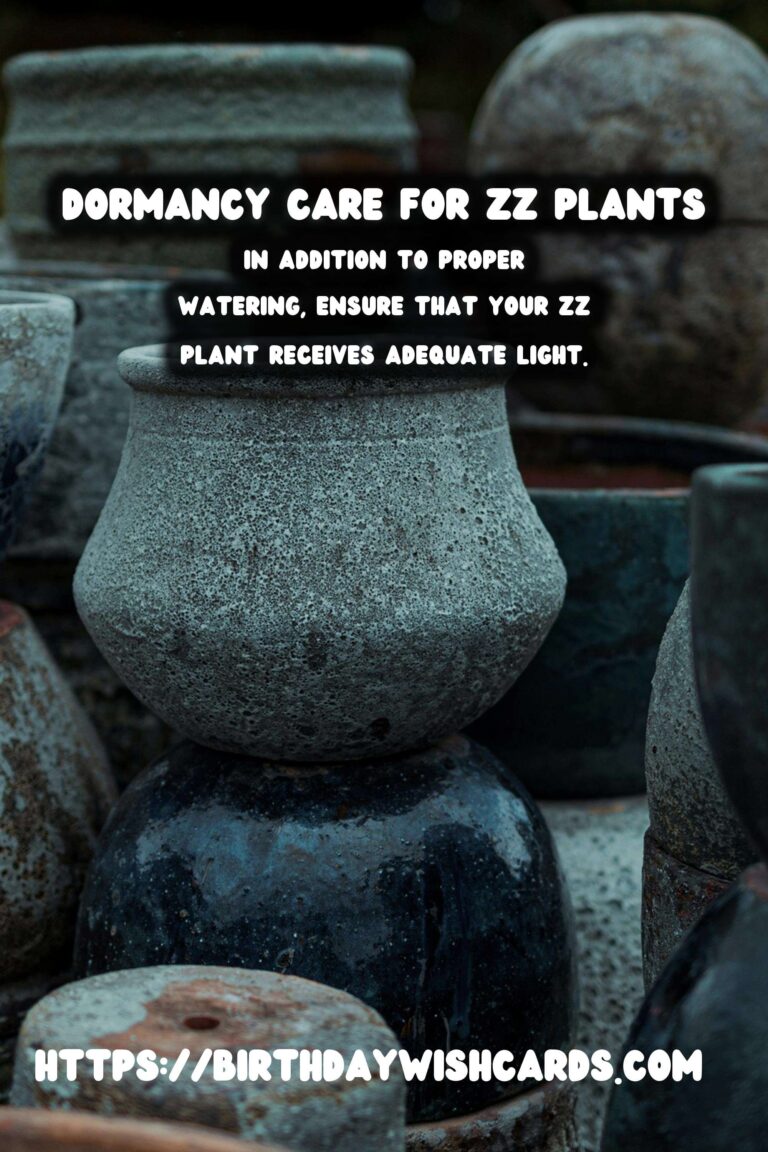
ZZ plants, scientifically known as Zamioculcas zamiifolia, are popular houseplants due to their striking appearance and resilience. Understanding how to care for them during their dormancy period is crucial to ensuring their health and longevity. This article provides detailed insights into watering ZZ plants during dormancy, along with other essential care tips.
Understanding ZZ Plant Dormancy
ZZ plants enter a state of dormancy typically during the cooler months when growth slows down. This period of rest is essential for the plant’s overall health. During dormancy, ZZ plants require less water as their metabolic processes slow down significantly.
Watering ZZ Plants During Dormancy
Proper watering is critical for ZZ plants, especially during dormancy. Overwatering during this time can lead to root rot, while underwatering can cause the plant to dehydrate. It is advisable to allow the soil to dry out completely between waterings. Check the top inch of the soil; if it feels dry to the touch, then it is time to water.
A good rule of thumb is to water ZZ plants once every three to four weeks during dormancy. Adjust the frequency based on the plant’s environment, such as humidity levels and temperature. Always ensure that the plant is in a pot with adequate drainage to prevent water from pooling at the bottom.
Signs of Overwatering and Underwatering
Understanding the signs of overwatering and underwatering can help you adjust your care routine. Overwatered ZZ plants often exhibit yellowing leaves and soft, mushy stems. In contrast, underwatered plants may show signs of wilting and have dry, crispy leaves.
Additional Care Tips for ZZ Plants
In addition to proper watering, ensure that your ZZ plant receives adequate light. While they can tolerate low light conditions, they thrive best in bright, indirect light. During dormancy, it’s important to keep the plant in a stable environment, avoiding drastic temperature changes.
ZZ plants are also sensitive to chemicals found in tap water, such as fluoride. It’s best to use distilled or rainwater for watering to prevent brown leaf tips.
Fertilization should be reduced or stopped during dormancy, as ZZ plants do not require additional nutrients when they are not actively growing.
Conclusion
Caring for ZZ plants during dormancy involves understanding their unique needs and adjusting your care routine accordingly. By paying close attention to watering practices and maintaining a stable environment, you can ensure your ZZ plant remains healthy throughout the year.
ZZ plants enter a state of dormancy typically during the cooler months when growth slows down. Proper watering is critical for ZZ plants, especially during dormancy to avoid root rot and dehydration. Overwatered ZZ plants often exhibit yellowing leaves and soft, mushy stems. In addition to proper watering, ensure that your ZZ plant receives adequate light. Caring for ZZ plants during dormancy involves understanding their unique needs and adjusting your care routine accordingly. 









#ZZPlants #PlantCare #Houseplants #Gardening #IndoorPlants




